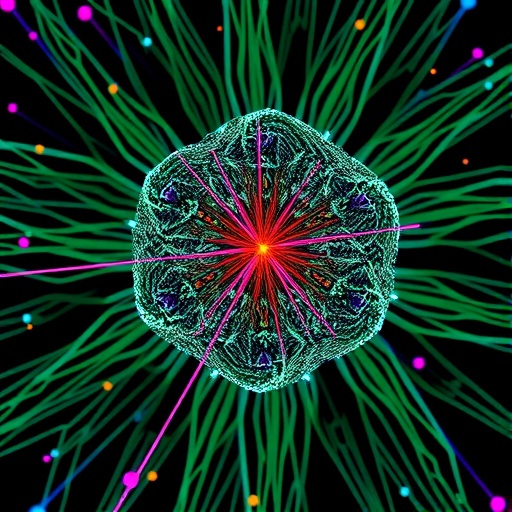In an intriguing exploration of deep neural networks and their alignment with biological vision systems, recent research has cast new light on the architectural factors influencing the emergence of cortex-aligned representations. Historically, it was posited that the architectural constraints inherent in these models were pivotal for their efficacy in predicting visual processing, particularly in how they mirrored the anatomical and functional traits of the primate visual cortex. Yet, this raises compelling questions, especially since diverse neural network architectures have been successfully pretrained, challenging the notion that architectural constraints are singularly influential.
To grip this critical inquiry, researchers scrutinized convolutional architectures—widely recognized for their application in computer vision tasks—that manipulate the dimensions of data to align with biological neural structures. They focused specifically on two paramount manipulations: the compression of spatial dimensions and the expansion of feature dimensions through the increase of channels. This dual approach allowed them to probe whether cortex-aligned representations propagate intrinsically through these structural modifications, even devoid of pretraining.
The methodology of the study was illuminating. Examining a variety of network architectures that forwent pretraining, researchers meticulously quantified the networks’ proficiency in predicting neuronal representations in the visual cortices of both monkeys and humans. This comparative analysis yielded insight into how certain architectural choices enabled networks to closely emulate biological operations. The study’s findings underline the hypothesis that convolutional networks manifest competition to replicate elements of biological visual processing simply through their inherent structural configurations.
It’s noteworthy that the research illuminated a significant detail: the synergy between spatial compression and feature expansion is critical for successful representation alignment. By pooling techniques to compress spatial dimensions while enhancing feature dimensions, convolutional architectures demonstrated a unique affinity for developing representations akin to those observed in biological visual systems. This interplay points to a broader implication regarding how design elements in neural network architectures can catalyze the emergence of cognitive-like functionality.
On the flip side, the authors also highlighted a stark contrast observed in other types of architectures. In configurations lacking the inherent structural biases characteristic of convolutional networks, dimensionality manipulations produced minimal effects. This critical observation suggests that the unique architectural design of convolutional networks offers pathways for achieving performance enhancements that may not be available to non-convolutional approaches. Thus, their findings imply a specific architectural advantage that draws parallels between artificial neural networks and biological neural processing.
Further scrutinizing the role of inductive biases, the paper made a compelling case for the necessity of convolutional architectures in leveraging feature expansion effectively. The occurrence of cortex-aligned representations was largely absent in non-convolutional architectures when similar dimensionality manipulations were implemented. This lack of cortical alignment raises important conversations around the design choices made in artificial intelligence frameworks, suggesting a possible convergence of empirical design principles drawn from the study of biological systems.
Moreover, when examining convolutional models with targeted lesions—systematically removing parts of the architecture—the researchers reinforced the significance of specific architectural elements necessary for fostering cortex-aligned representations. These targeted investigations further illustrate how nuanced architectural adaptations can either enhance or inhibit the network’s capacity to engage with biological equivalences.
The overarching narrative emerging from this exploration posits that convolutional architectures do not just serve as a computational tool but instead resonate closely with constraints of biological cognition. This intersection between artificial neural network design and biological visual processing is a burgeoning area of study, with implications that extend into the effective creation of AI models that are not only computationally proficient but also biologically informative.
As AI continues to evolve at an unprecedented pace, understanding the implications of this research holds significant potential for future developments in the field. Building AI systems that embody principles observed in biological systems could lead to more effective models, enabling better performance in tasks such as image recognition, visual processing in robotics, and even in understanding neurological disorders.
In conclusion, as the investigation into how architectural biases contribute to neural representation continues, it becomes clear that the synergy between biological insights and computational architectures offers a rich landscape for future exploration. The study invites broader considerations about how the design of neural networks can be informed by biological systems, enhancing our understanding of intelligence—both artificial and biological.
Subject of Research: The role of architecture in the emergence of cortex-aligned representations in deep neural networks.
Article Title: Convolutional architectures are cortex-aligned de novo.
Article References:
Kazemian, A., Elmoznino, E. & Bonner, M.F. Convolutional architectures are cortex-aligned de novo.
Nat Mach Intell (2025). https://doi.org/10.1038/s42256-025-01142-3
Image Credits: AI Generated
DOI: https://doi.org/10.1038/s42256-025-01142-3
Keywords: Deep Neural Networks, Visual Cortex, Convolutional Architectures, Cognitive Functionality, Artificial Intelligence




